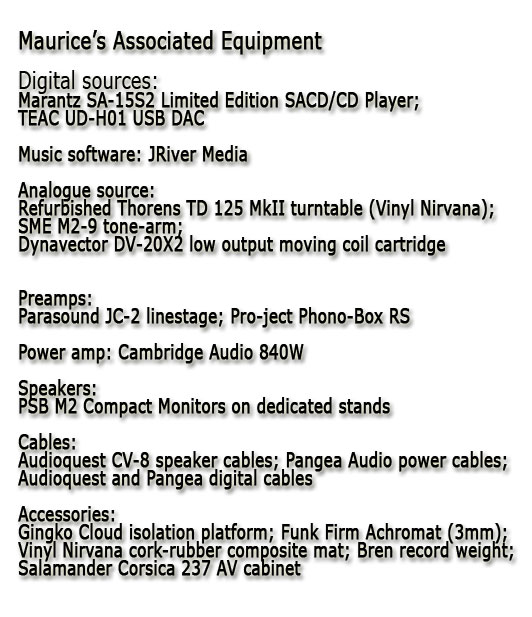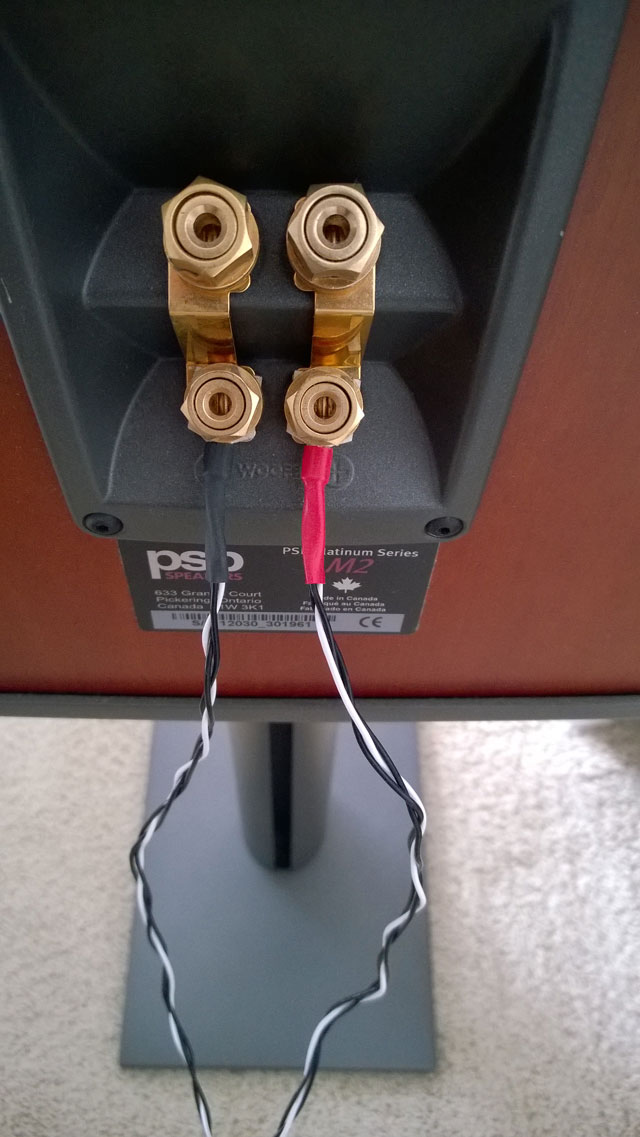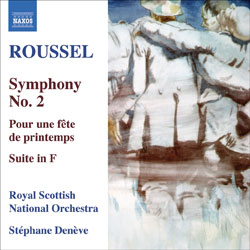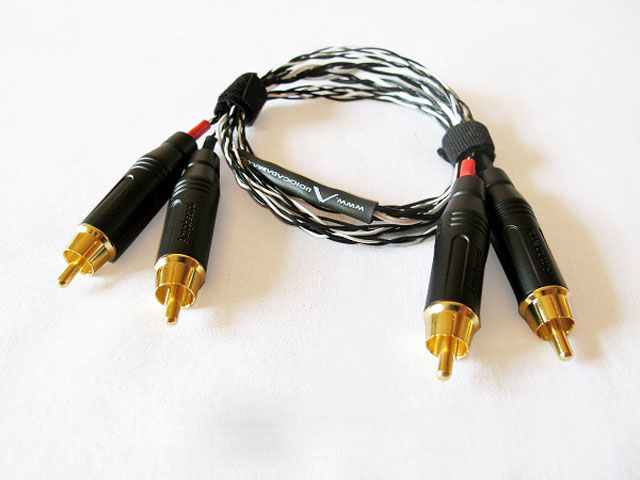Audiocadabra Optimus series Cables

Endings and beginnings
 The origins of this review date back to the 2013 AXPONA-Chicago high-end show. It was there that I first met my friend, the late Mark Hawkins, a lifelong music lover, former New Orleans jazz DJ, and audiophile extraordinaire, in the Acoustic Zen/Japan Triode Corporation suite. As anyone who has heard Robert Lee’s superb Crescendo loudspeakers partnered with the Triode Corporation TRX-M845 mono-blocks at the various shows can attest, year after year this pairing delivers some of the finest sound available at any price. I spent the rest of the weekend – sometimes alone but more often with Mark in tow – chasing sonic nirvana, sipping Roy Hall’s smoky single malts, meeting other audiophiles, and generally having a blast. AXPONA 2014 delivered more of the same, this time with more friends plus a smattering of family members tagging along for the ride.
The origins of this review date back to the 2013 AXPONA-Chicago high-end show. It was there that I first met my friend, the late Mark Hawkins, a lifelong music lover, former New Orleans jazz DJ, and audiophile extraordinaire, in the Acoustic Zen/Japan Triode Corporation suite. As anyone who has heard Robert Lee’s superb Crescendo loudspeakers partnered with the Triode Corporation TRX-M845 mono-blocks at the various shows can attest, year after year this pairing delivers some of the finest sound available at any price. I spent the rest of the weekend – sometimes alone but more often with Mark in tow – chasing sonic nirvana, sipping Roy Hall’s smoky single malts, meeting other audiophiles, and generally having a blast. AXPONA 2014 delivered more of the same, this time with more friends plus a smattering of family members tagging along for the ride.
When the subject of high-end audio reviewing came up, as it frequently did that weekend, Mark often mentioned the high regard with which he held online audio review pioneer Clement Perry and the internet-based journal he ran, Stereo Times. In the fall of 2014, after several months of silence, I learned from a mutual colleague that Mark had passed away over the summer. I was stunned, and reminded more than a little of my own mortality. Shortly thereafter, I sent Clement an email informing him of Mark’s death (CP had actually learned of Mark’s passing before me).
A series of friendly emails followed, emails that served as introductions but also sober reminders of the importance of living well and taking nothing for granted. After acknowledging our shared admiration of Mark, our love of the music (jazz in particular), and our love of the hobby, an offer to review was extended and – for my part – eagerly accepted.
Cables, penance and perceived value
 This review serves as both my formal introduction to the Stereo Times family and, ironically, as a kind of penance. You see, back in the fall of 2013 I recommended to my pal Mark a discount interconnect cable I discovered on the internet and successfully installed into my reference system, a cable that he ended up buying and hating – not disliking mind you – but truly hating. I felt bad, really bad. Not so bad that I was willing to cover the cost for giving my friend what ended up being a bum steer (the cables only cost 150 smackers), but bad enough. So when CP suggested that I review some promising budget cables from a little known Indian firm – Audiocadabra – for my first assignment, I thought, why the hell not? Mark would certainly approve, especially if the cables ended up sounding good and offering real value.
This review serves as both my formal introduction to the Stereo Times family and, ironically, as a kind of penance. You see, back in the fall of 2013 I recommended to my pal Mark a discount interconnect cable I discovered on the internet and successfully installed into my reference system, a cable that he ended up buying and hating – not disliking mind you – but truly hating. I felt bad, really bad. Not so bad that I was willing to cover the cost for giving my friend what ended up being a bum steer (the cables only cost 150 smackers), but bad enough. So when CP suggested that I review some promising budget cables from a little known Indian firm – Audiocadabra – for my first assignment, I thought, why the hell not? Mark would certainly approve, especially if the cables ended up sounding good and offering real value.
I’m happy to report that on both counts the cables deliver. As solace, I’d like to think that Mark would not only be happy about my joining the Stereo Times team; he’d actually like the cables as well. Enter our aforementioned newcomer (a relative term as this firm opened in 2005), Audiocadabra: a young Indian cable manufacturer from a country not known as a hotbed of high-end audio production and design.[1] CP had already been approached by Audiocadabra who eagerly wanted Stereo Times to review their latest offerings. After a series of friendly email exchanges with the company’s enthusiastic Denny Kaippillil, we agreed that I would review some of Audiocadabra’s top-of-the-line products: the Optimus single-ended ($79.00) and balanced ($89.00) analogue interconnects and the Optimus (3 meter/spade terminated) speaker cables ($179).
A month later, on Martin Luther King Day to be precise, I received a lightweight – and by lightweight I mean no more than a pound or so – bubble-lined DHL express envelope. Inside I found a re-sealable clear plastic container with fold-down top lid, not unlike a kitchen container of similar construction, stuffed with three zip-loc bags, two containing a pair of RCA interconnects, the other a pair of XLRs (the speaker cables arrived three weeks later in identical packaging). Lots of budget-conscious cable companies use similar packaging arrangements, so nothing seemed out of the ordinary here.
What did catch my eye was the interconnect construction: three braided black and white teflon-covered strands – each barely larger than a comparable strand of teflon-sheathed radio or telephone wire – but here formed of select hand-woven multi-strand pure copper conductors. The balanced pair feature very high-quality Neutrik connectors while the single-ended cables feature high-quality plugs from Amphenol Audio Products. Amphenol is an Australian-based manufacturer of RF connectors, adapters, and cable assemblies. The easy-to-navigate Audiocadabra website states that its preferred braided architecture and unique cable geometry were chosen for their ability to reject EMI/RFI interference and to minimize delicate signal losses.

The speaker cables feature the same tri-braid geometry, but come terminated with low-mass silver-plated pure copper spade connectors (banana plug fans are out of luck, at least for now). According to Denny, and I quote him directly here, “Audiocadabra speaker cables are made of pure copper tip-to-tip. Our speaker cables have no brass plugs, nickel plating, solder, plastic, PVC… These cables consist of 95% copper, 4.9% Teflon and 0.1% heatshrink. They are also very difficult to handcraft and there are very few speaker cables out there that are made of solid-core wires and yet offer the level of flexibility, form and function that our product offers.”
Itsy-bitsy cables, biggie sound
In the case of the Audiocadabra cables, looks certainly deceived. What I expected before actually listening to these demure, modest looking, but not unattractive wires was a lightweight presentation with limited bass power and limited tonal complexity. What I heard couldn’t have sounded more different. The first descriptors that came to mind were “light” and “airy”, but with balls. Regardless of the source, whether vinyl or digital, the overall sonic impression remained consistent: a harmonically full, cohesive sound infused with light and air. This was a good thing because my reference Parasound JC-2 preamp excels at the accurate and natural reproduction of ambient information embedded in whatever playback media one selects, meaning that the Audiocadabra cables weren’t masking these details. This was a promising start.
 With the Audioadabras dialed in, my Parasound JC-2/Cambridge Audio 840W pre-power combo unearthed ambient details like a skilled archeologist unearthing Pharaoh’s tomb. So with a voice like Danish jazz phenom Sinne Eeg’s airy alto (I think she is an alto, but with an impressive range up and down the spectrum), the Optimus wires allowed me to appreciate fully her breathy hesitance, delicate phrasing and articulation, plus near-perfect pitch control. These qualities go a long way toward separating truly great artists from the legions of stylistic emulators and also-rans that a certain class of superannuated audiophile routinely gushes over. When reinterpreting Legrand and Bergman’s plaintive “What Are You Doing for the Rest of Your Life” on the 2014 CD Face the Music [Stunt Records – STUCD 14042], the Optimus cables allowed the system to recreate Eeg’s voice just right of soundstage center, with percussionist Morten Lund situated directly behind her, and bassist Morten Ramsbol seated slightly center-left. Equally important, at least to me, the system reproduced Eeg’s voice with all its lilting sweetness intact, underpinned by a full-bodied tonality that never sounded thin or bleached.
With the Audioadabras dialed in, my Parasound JC-2/Cambridge Audio 840W pre-power combo unearthed ambient details like a skilled archeologist unearthing Pharaoh’s tomb. So with a voice like Danish jazz phenom Sinne Eeg’s airy alto (I think she is an alto, but with an impressive range up and down the spectrum), the Optimus wires allowed me to appreciate fully her breathy hesitance, delicate phrasing and articulation, plus near-perfect pitch control. These qualities go a long way toward separating truly great artists from the legions of stylistic emulators and also-rans that a certain class of superannuated audiophile routinely gushes over. When reinterpreting Legrand and Bergman’s plaintive “What Are You Doing for the Rest of Your Life” on the 2014 CD Face the Music [Stunt Records – STUCD 14042], the Optimus cables allowed the system to recreate Eeg’s voice just right of soundstage center, with percussionist Morten Lund situated directly behind her, and bassist Morten Ramsbol seated slightly center-left. Equally important, at least to me, the system reproduced Eeg’s voice with all its lilting sweetness intact, underpinned by a full-bodied tonality that never sounded thin or bleached.
Nowhere was this balancing act more in evidence than on Analogue Production’s stunning 200 gram vinyl reissue of Duke Ellington’s landmark Masterpieces By Ellington [Columbia ML 4418]. Recorded in 1951, this mono gem finds Duke and crew at the height of their inestimable powers. One immediately appreciates the exotic orchestration, the truth of instrumental timbres (especially the woodwinds, Wendell Marshall’s earthy bass, and Paul Gonzalves’ sinewy, seductive tenor), and the sheer depth and layering of the orchestral soundstage. And yes, all this from a mono recording that today’s sound engineers would consider primitive at best.
 Nor were the Audiocadabra cables sonic one-trick ponies. Yes, they could tease out ethereal, deeply layered soundstages with my reference set-up without compromising the music’s harmonic structure and tonal balance. But they could also rock dynamically! Back in the digital realm, Stéphan Denève’s masterful readings of the neglected works of early twentieth century French composer Albert Roussel for the Naxos label [Naxos 8.504017][2] have proven to be a never-ending source of amazement and joy. Recorded at Henry Wood Hall (and on one occasion at Glasgow City Halls) over a two year period, with Denève leading the always-dependable Royal Scottish National Orchestra, these interpretations bristle with energy and vigor. Roussel never flirted with atonalism, despite the prevalence of that idiom during the twenties and thirties, choosing instead to till more familiar tonal soils. Yet for all its accessibility, Roussel’s music never, ever sacrifices melodic and harmonic inventiveness, humor, rhythmic complexity, and dynamic swagger for banal tunefulness.
Nor were the Audiocadabra cables sonic one-trick ponies. Yes, they could tease out ethereal, deeply layered soundstages with my reference set-up without compromising the music’s harmonic structure and tonal balance. But they could also rock dynamically! Back in the digital realm, Stéphan Denève’s masterful readings of the neglected works of early twentieth century French composer Albert Roussel for the Naxos label [Naxos 8.504017][2] have proven to be a never-ending source of amazement and joy. Recorded at Henry Wood Hall (and on one occasion at Glasgow City Halls) over a two year period, with Denève leading the always-dependable Royal Scottish National Orchestra, these interpretations bristle with energy and vigor. Roussel never flirted with atonalism, despite the prevalence of that idiom during the twenties and thirties, choosing instead to till more familiar tonal soils. Yet for all its accessibility, Roussel’s music never, ever sacrifices melodic and harmonic inventiveness, humor, rhythmic complexity, and dynamic swagger for banal tunefulness.
His Bacchus et Ariane ballet is a revelatory study in dynamic and tonal contrasts. Take the ballet’s 3rd movement, the Danse du labyrinthe, which opens with the lead clarinet and then the lead oboe and flutes sketching a mischievous dance motif over the sinister and ominous grumblings of the low basses and tympani – all denoting aimlessly frolicking pagan adolescents, blissfully unaware of the approaching Bacchus and his promises of wine, carnality and all-consuming madness. With the Optimus cables linking source to preamp and thence to power amp and speakers, one hears the full spectrum of tonal colors: the sweet and seductive middle registers and airy, silvery highs of the clarinets, flutes and oboe; the pizzicato plucks of the strings – their tonal and micro-dynamic footprints reproduced intact; the bite and “blattiness” of the brass; the positively thunderous bass, all balanced in a frenetic mélange more akin to, say, the neo-classical musings of Stravinsky or Bartok from the same period (1930) than the French Impressionists that inspired Roussel in his youth. Stunning!
Parting thoughts
I could go on, but I think you get the point. The Audiocadabra Optimus cables are something quite special and, at the price, a stone-cold bargain. Tonally neutral, nicely balanced from top to bottom, and vibrantly dynamic, they allowed my reference system to perform at its best. I especially loved the cable’s ability (both the interconnects and the speaker cables) to convey the air and upper-frequency shimmer embedded in the best of my recordings. If you haven’t yet noticed, I’m a real sucker for systems that can accurately recreate this sense of airy openness. On the flipside, were the Audiocadabras perhaps adding a bit of upper midrange-lower treble spotlighting? Perhaps, but always in a way consonant with the music.
Competition-wise, something like Kimber Kable’s PBJ interconnects employ a similar braided construction geometry, offer a cohesive and balanced sound, and comparable price and build quality. Perhaps more importantly, in my system, the Optimus speaker cables sounded more neutral, open, and airy than my long-term references, Audioquest’s popular but now discontinued CV-8s. Given that the CV-8s cost roughly $900 bucks for a 3 meter pair when last available at full retail, this is saying something.
The only practical downside is the inability to audition these cables first before shelling out your hard-earned shekels, along with potential customs delays once the cables reach stateside. But with Audiocadabra’s 14 day risk-free trial guarantee, music lovers putting together modestly-priced systems, or those wanting to replace their aging Clinton-era wires at a reasonable cost, can do so with few downsides and a gaggle of sonic upsides. Warmly recommended, then. (BTW: I’m keeping the review samples as an affordable reference.)

Specifications:
Audiocadabra Optimus RCA and XLR Interconnects
One meter pair price: $79.00 pair (RCA termination)
One meter pair price: $89.00 pair (XLR termination)
Audiocadabra Optimus Plus Handcrafted Speaker Cables
3 meter pair: $189.00 (spade terminated)
Please visit www.audiocadabra.com for detailed specifications
Shipping: Free worldwide shipping for a limited period (contact seller for details)
Manufacturer:
AudiocadabraAccessories
Mumbai, India
Phone: + 91 9820402024
Skype: Audiocadabra
www.audiocadabra.com
[1] Many Stereo Times readers will no doubt have at least passing familiarity with the superb Rethm high-efficiency loudspeakers manufactured in Kerala, India, along with that firm’s equally enticing cables and tube electronics. Beyond Rethm, I know of no other Indian high end audio firms of note. Hopefully, this review will help to put Audiocadabra on the high-end map, too.
[2] I can’t recommend this 4-CD box-set highly enough. From start to finish, the cycle will challenge the dynamic, micro-dynamic, tonal and imaging capabilities of your system. The last time I checked, new sets were still available from a number of dealers on Amazon.com for as little as $15.97 plus shipping (as of March 5, 2015). That works out to around $4.99 per disc for the math-challenged.
Stereo Times Masthead
Publisher/Founder
Clement Perry
Editor
Dave Thomas
Senior Editors
Frank Alles, Mike Girardi, Russell Lichter, Terry London, Moreno Mitchell, Paul Szabady, Bill Wells, Mike Wright, and Stephen Yan,
Current Contributors
David Abramson, Tim Barrall, Dave Allison, Ron Cook, Lewis Dardick, John Hoffman, Dan Secula, Don Shaulis, Greg Simmons, Eric Teh, Greg Voth, Richard Willie, Ed Van Winkle, Rob Dockery, Richard Doran, and Daveed Turek
Site Management Clement Perry
Ad Designer: Martin Perry







Be the first to comment on: Audiocadabra Optimus series Cables